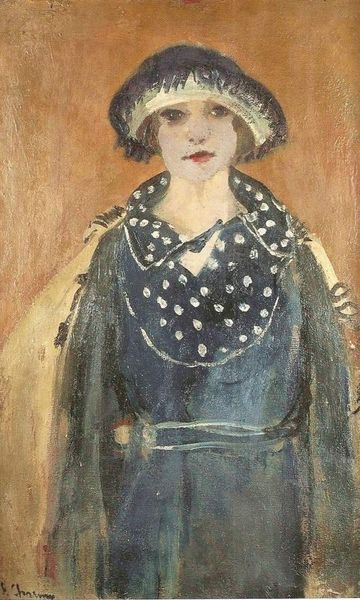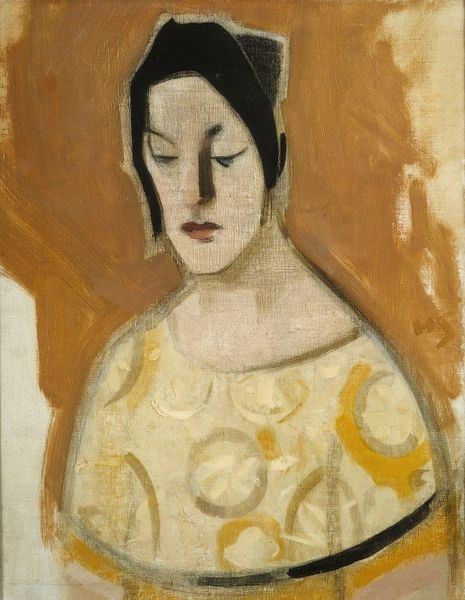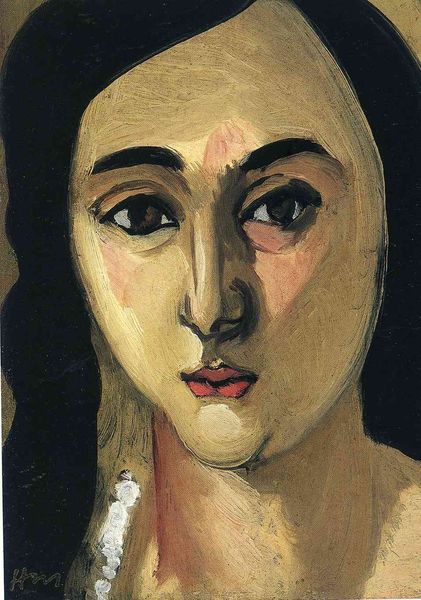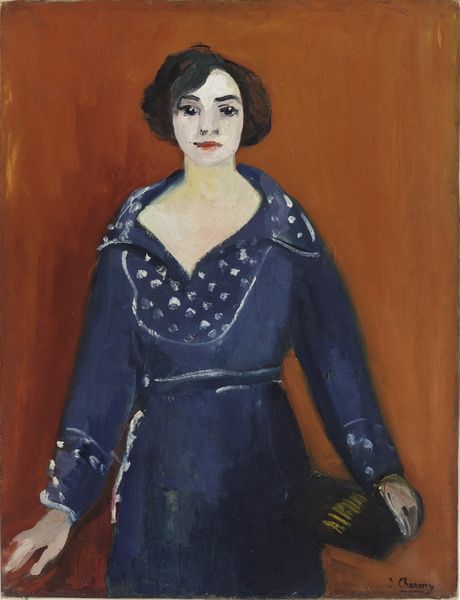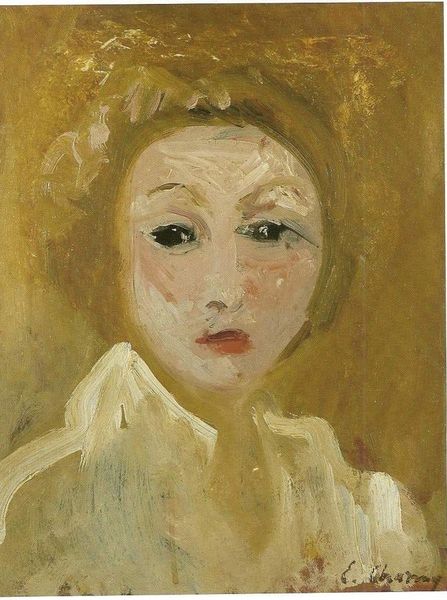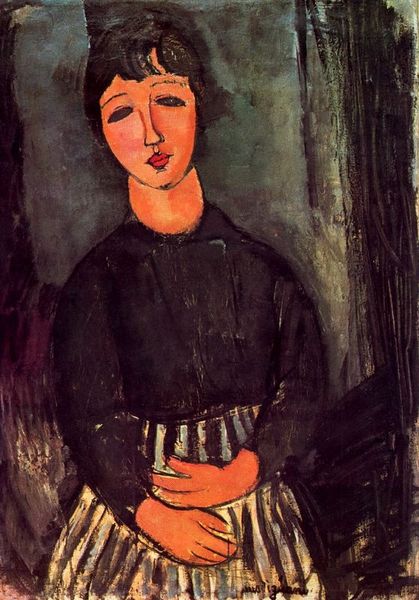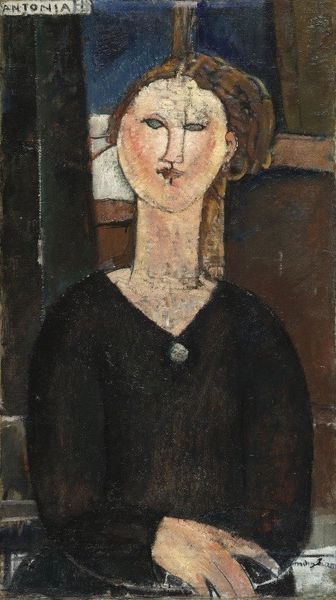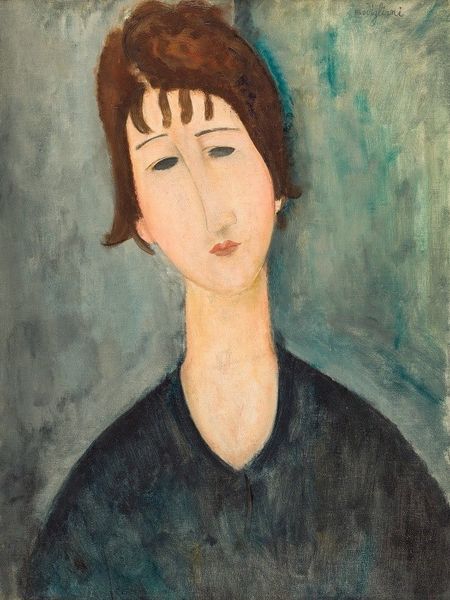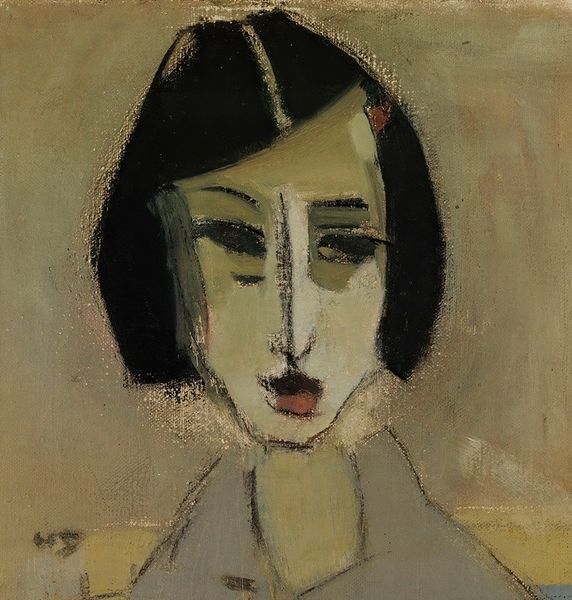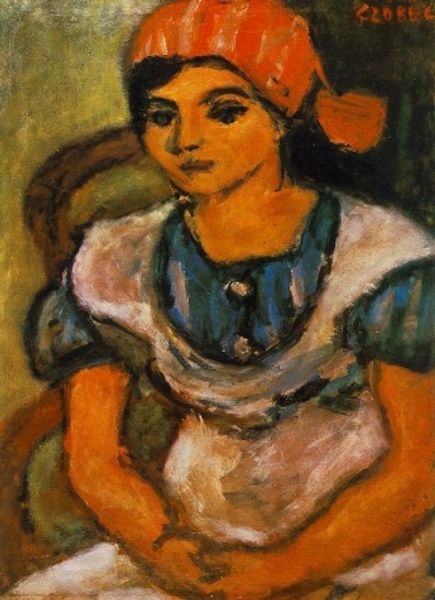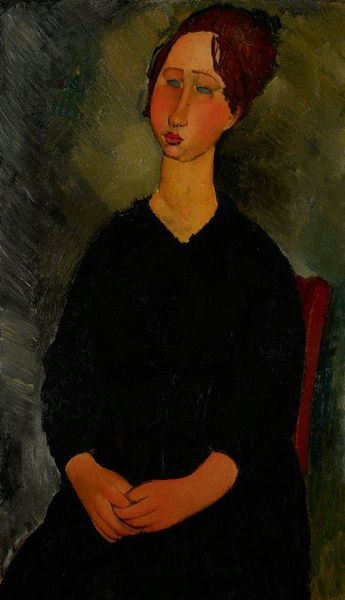
Copyright: Public domain US
Émilie Charmy painted this self-portrait in France, likely in the early 20th century. The work offers a glimpse into the world of a woman artist navigating the male-dominated art world of her time. Consider the institutional barriers that women artists faced. They were often excluded from formal training, exhibition opportunities, and critical recognition. How might those conditions have shaped Charmy's artistic choices? The direct gaze and confident posture of the figure suggest a desire to assert her presence and challenge conventional representations of women in art. The loose brushwork and simplified forms reflect the influence of modern movements like Impressionism and Post-Impressionism. By examining archival materials such as exhibition catalogues, critical reviews, and biographical information, we can gain a deeper understanding of Charmy's place within the artistic and social landscape of her time. We can understand her challenges and triumphs as a woman artist in a rapidly changing world. This painting reminds us that artistic expression is always intertwined with the social and institutional contexts in which it is created.
Comments
No comments
Be the first to comment and join the conversation on the ultimate creative platform.
